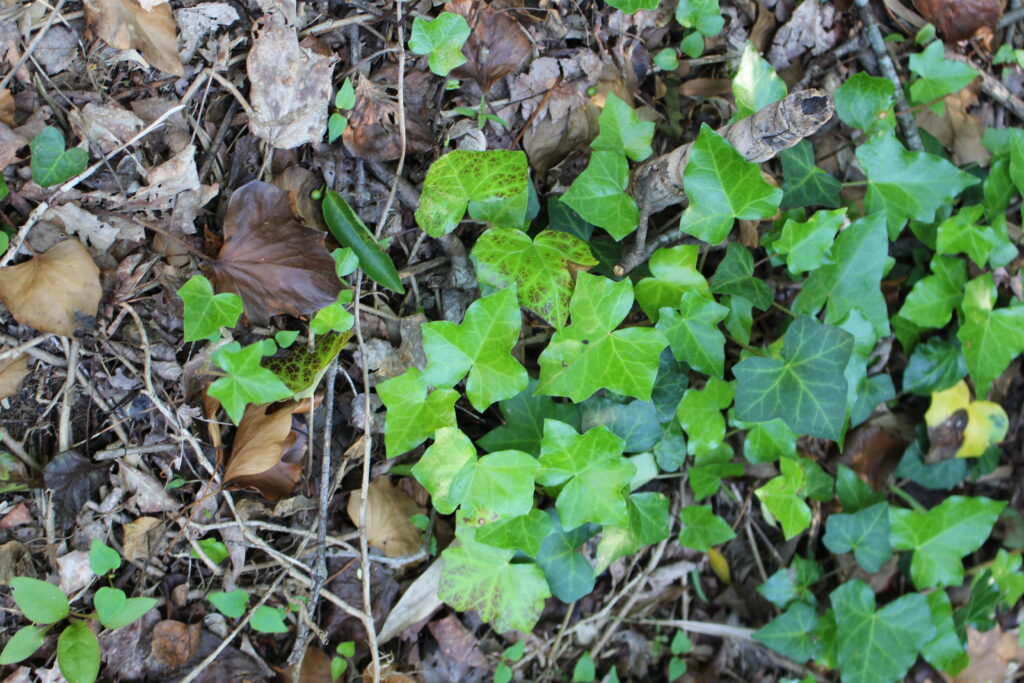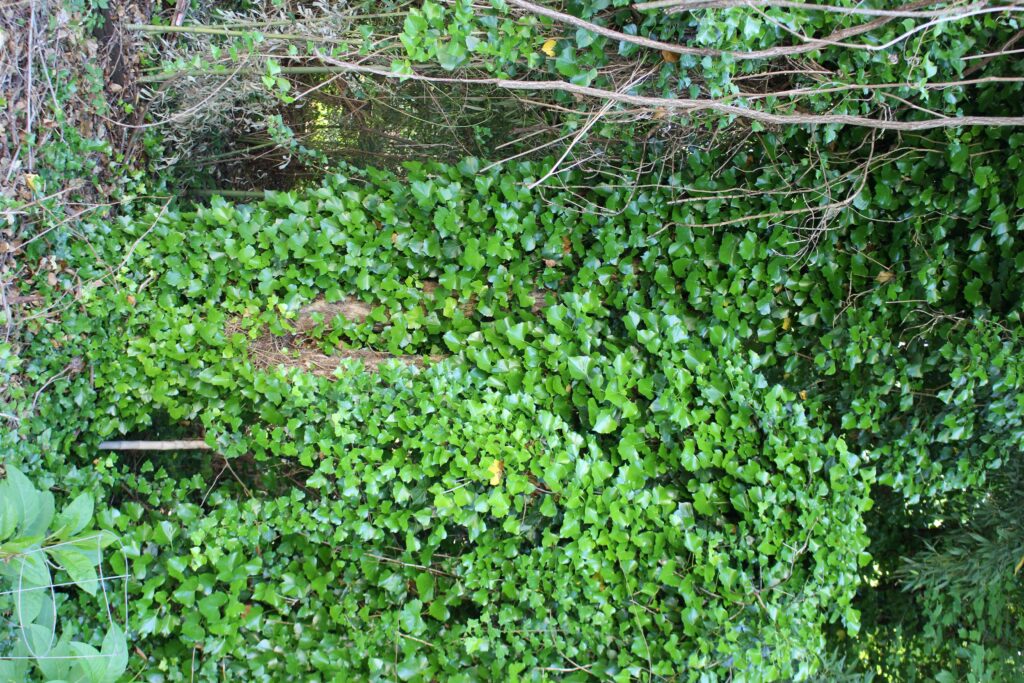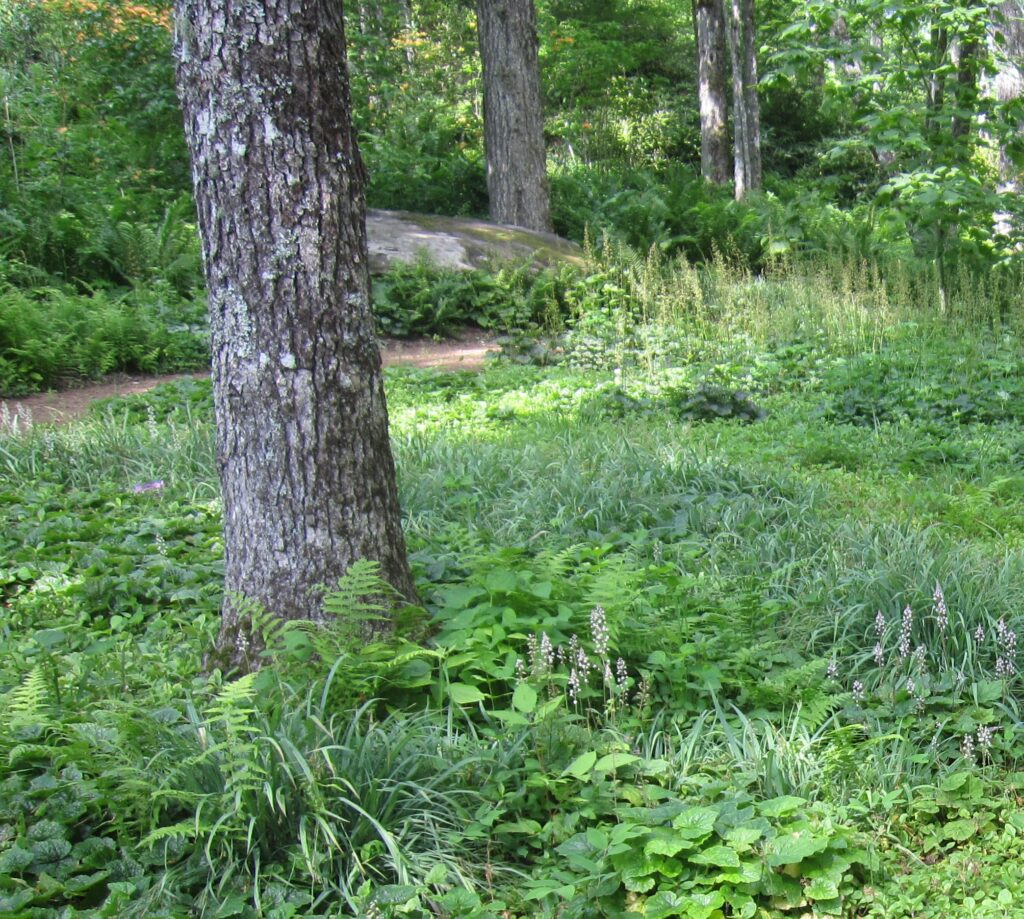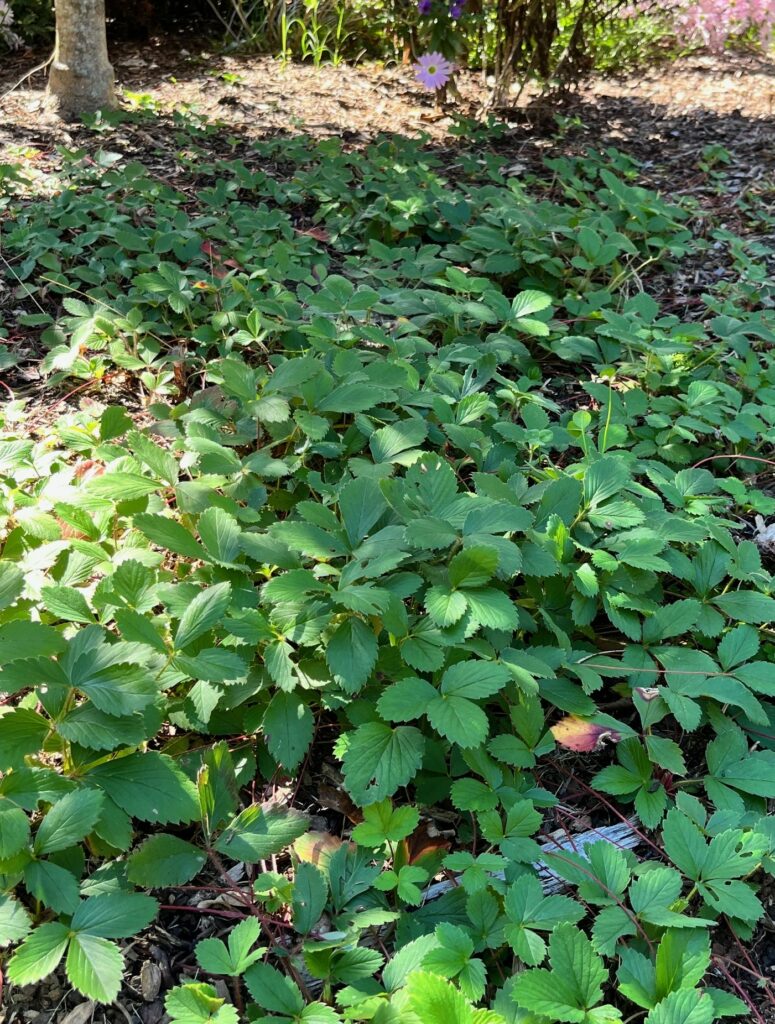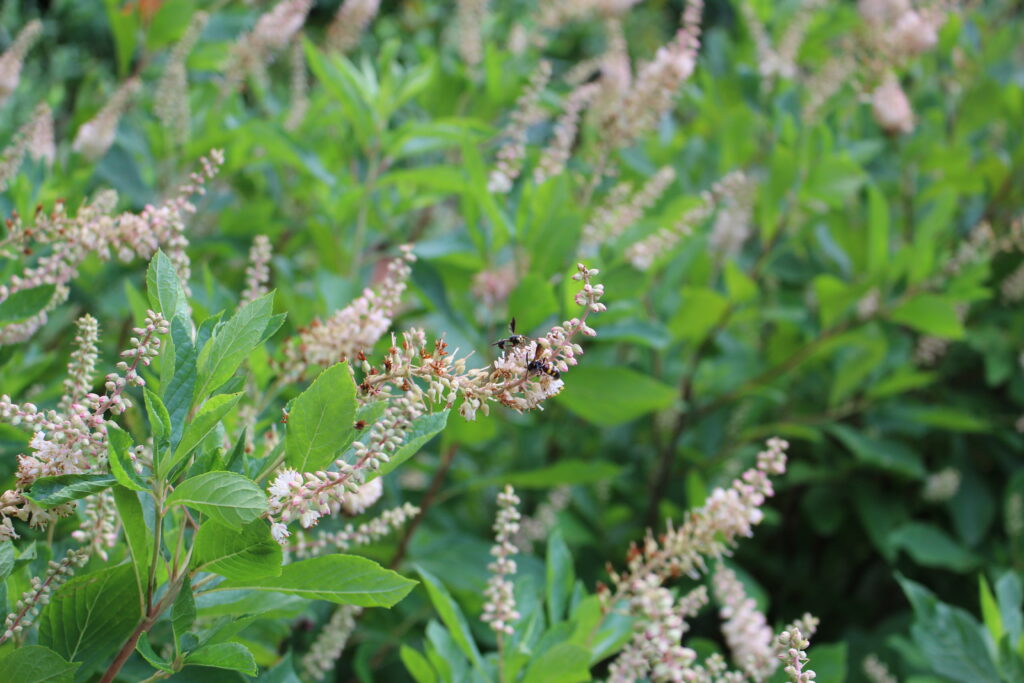Invasive Plants & Alternative Options
go.ncsu.edu/readext?1074767
en Español / em Português
El inglés es el idioma de control de esta página. En la medida en que haya algún conflicto entre la traducción al inglés y la traducción, el inglés prevalece.
Al hacer clic en el enlace de traducción se activa un servicio de traducción gratuito para convertir la página al español. Al igual que con cualquier traducción por Internet, la conversión no es sensible al contexto y puede que no traduzca el texto en su significado original. NC State Extension no garantiza la exactitud del texto traducido. Por favor, tenga en cuenta que algunas aplicaciones y/o servicios pueden no funcionar como se espera cuando se traducen.
Português
Inglês é o idioma de controle desta página. Na medida que haja algum conflito entre o texto original em Inglês e a tradução, o Inglês prevalece.
Ao clicar no link de tradução, um serviço gratuito de tradução será ativado para converter a página para o Português. Como em qualquer tradução pela internet, a conversão não é sensivel ao contexto e pode não ocorrer a tradução para o significado orginal. O serviço de Extensão da Carolina do Norte (NC State Extension) não garante a exatidão do texto traduzido. Por favor, observe que algumas funções ou serviços podem não funcionar como esperado após a tradução.
English
English is the controlling language of this page. To the extent there is any conflict between the English text and the translation, English controls.
Clicking on the translation link activates a free translation service to convert the page to Spanish. As with any Internet translation, the conversion is not context-sensitive and may not translate the text to its original meaning. NC State Extension does not guarantee the accuracy of the translated text. Please note that some applications and/or services may not function as expected when translated.
Collapse ▲Invasive plants are non-native plants that escape cultivation and begin to displace native plants. The North Carolina Invasive Plant Council maintains a list of invasive plants for our state, as well as information on invasive species.
This page includes information compiled by NC State Extension Master Gardener volunteers of Forsyth County about common invasive plants in the Piedmont region and some alternative options for your yard.
English Ivy
English Ivy (Hedera helix) is initially seen as the “perfect” groundcover. It spreads readily, grows in the shade and can be helpful in controlling erosion on shady slopes. But these very aggressive qualities soon make it a nuisance – it spreads quickly into areas you never intended for it to grow and is extremely difficult to control because of the strong roots, ability to climb trees, and its berry production. English Ivy has been placed it on the severe threat list of invasive plants for North Carolina because of its dangerous spread that replaces native plant species.
As ivy spreads, it threatens all vegetative levels of both forests and open areas. When ivy heads up trees, it smothers the trees, making it hard for the leaves to get sun for photosynthesis and as it grows upwards, it starts producing berries – which the birds eat and carry to other areas. Additionally, English ivy serves as a reservoir for bacterial leaf scorch that infects oaks, elms and maples
If you already have English ivy as a ground cover the first step is to stay vigilant. Trim it when it reaches the edge of beds and as it gets close to trees. If the ivy has started climbing trees, cut the ivy stems off at the base of the tree. Then, make a plan to remove the ivy entirely. Read more about Controlling English Ivy in Urban Landscapes.
Native Alternatives to English Ivy
There are many plants native to NC that can be used as alternative groundcovers that do not threaten the environment.
The native Virginia Creeper (Parthenocissus quinquefolia) has wonderful fall color and is a vigorous vine that will creep along the ground and can control erosion. You may need to periodically trim it to keep it in bounds.
A mix of native perennials can form a lovely groundcover for shade or part shade: Coral Bells (Heuchera varieties), Foamflower (Tiarella cordifolia), Christmas Fern (Polystichum acrostichoides), Southern Lady Fern (Athyrium asplenioides), and native Sedges (Carex species) make good combinations.
Allegheny Spurge (Pachysandra procumbens) and Wild Geranium (Geranium maculatum) can be used as groundcovers in locations with light shade. Wild Strawberry (Fragaria virginiana) is a wonderful spreader that grows in part sun and has tiny edible berries loved by wildlife and people (if you are quick). For sun, Creeping Phlox (Phlox subulata) provides great ground coverage and delightful masses of spring flowers.
Learn more about these plants on the NC Extension Gardener Plant Toolbox.
Butterfly Bush
Butterfly Bush (Buddleja davidii), also known as Summer Lilac or Orange-Eyed Butterfly Bush, is native to Tibet and south-central China. It came to the U.S. around 1900. Butterfly Bush is a woody, deciduous shrub that grows 3 to 12 feet tall and is known for the fragrance of its bloom cluster which attract pollinators for nectar.
Butterfly Bush is now classified as invasive for its damage to the ecosystem by the Invasive Plant Council in New Zealand, Europe and many U.S. states, including North Carolina. Each single bloom panicle contains as many as 40,000 seeds! Wind and water disperse the seeds to new areas especially moist areas, streambanks and wetlands. The seeds easily germinate and can remain viable for up to five years. This causes dense stands that block out sunlight and choke native understory plants that pollinators depend on for food, shelter and places to raise young.
If you have Butterfly Bush, management should include cutting off dead bloom heads before seeds are dispersed. Next steps include pulling seedlings and digging out plants and replacing with a noninvasive shrub such as North Carolina State University’s “Lo & Behold” series of butterfly bush.
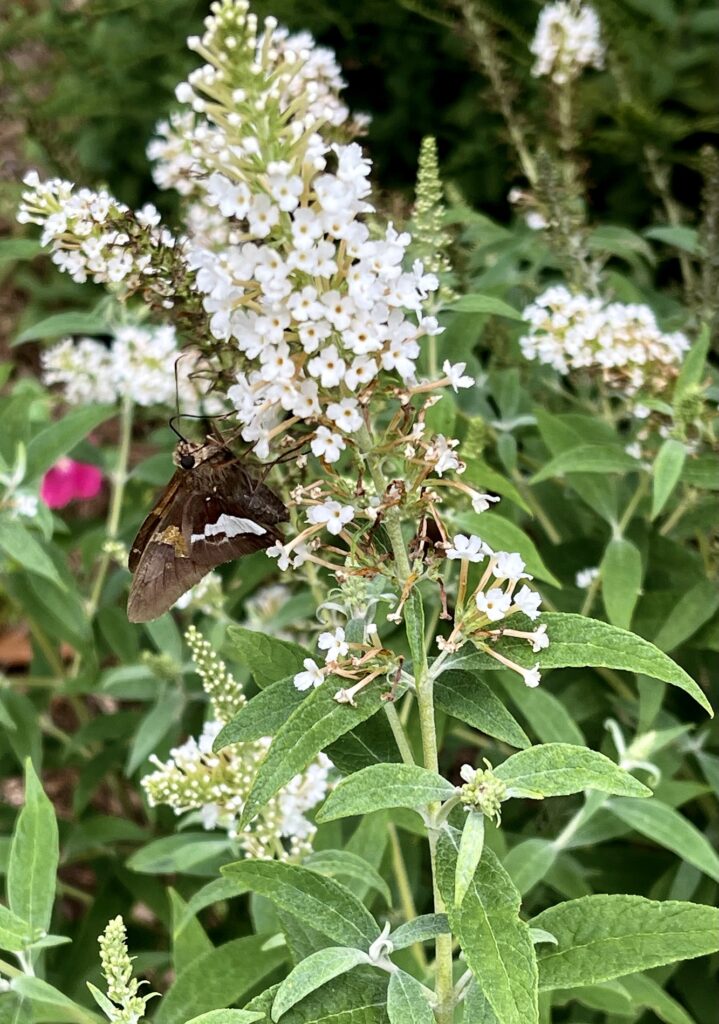
A Butterfly Bush with white flowers growing in the garden. Photo by NC State Extension Master Gardener volunteer Suzanne Shuford.
Native Alternatives to Butterfly Bush
Several native shrubs can be used in the place of Butterfly Bush. These shrubs will not only provide nectar for our pollinators but will also act as places for our pollinators to raise young. Consider planting these:
Summersweet or Sweet Pepper Bush (Clethra alnifolia) is a 5-10’ deciduous shrub with white (or pink for cultivar C. alnifolia ‘Ruby Spice’) flower spikes that bloom in summer. The flowers produce high quality nectar and pollen that supports hummingbirds, butterflies, bees and other pollinators as well as seeds for birds in the fall and winter. This shrub is unique in that it blooms in shady locations when few other shrubs are in bloom.
Native Buttonbush (Cephalanthus occidentalis) is a deciduous shrub that can take pruning well. It prefers moist, full/part sun conditions but tolerates dry conditions once established. Blooms resemble small, round pincushions that are fragrant and white in June to September. Buttonbush has amazing wildlife benefits and attracts many pollinators. A dwarf cultivar is available.
Virginia Sweetspire (Itea virginica) is a deciduous or semi-evergreen shrub with fragrant, arching white blooms in late spring/early summer. Beautiful fall color of red-purple persists into winter. Flowers attract butterflies and other pollinators and seeds are preferred by songbirds.
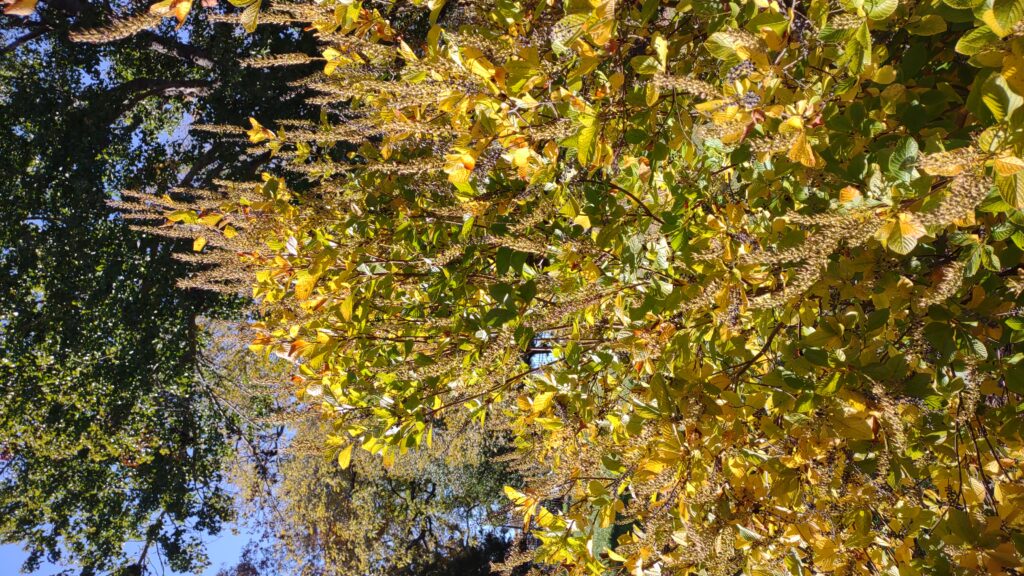
Clethra alnifolia ‘Sixteen Candles’ develops yellow color in the fall garden. Photo by Angie Edwards
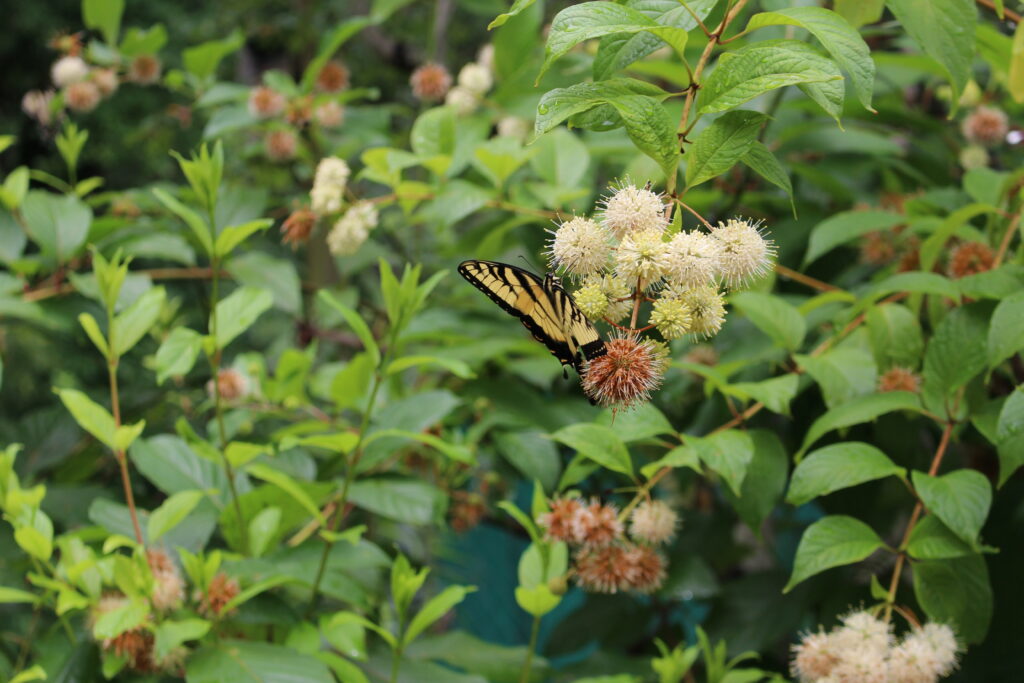
Buttonbush has round white blooms that are visited by many pollinators, including this Swallowtail butterfly.
Special thanks to NC State Extension Master Gardener volunteers Kathy Johnson and Barb Trueheart for contributing the information on this page.





